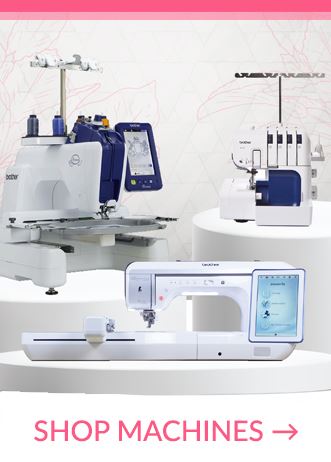What is Digitizing?
Author: Lindee Goodall
In a nutshell, digitizing is the process of creating a machine-ready embroidery design. In the past, digitizing was a highly technical and laborious process with a steep learning curve. Today, with advances in hardware and software, truly anyone can create their own embroidery designs.
First, a little history
You may also hear digitizing called "punching" or even "programming" and you may still hear embroidery designs referred to as "tapes" or "cards" – all terms that harken back to embroidery's heritage.
Originally, embroidery designers were called "punchers" because they physically punched holes into a paper tape – and hence the name; tapes. I, for one, am glad the process advanced before I fell into digitizing because I'm not sure I would have the patience for that. Can you imagine creating a design without being able to see it?
Later, as we entered the "computer age," digitizing became the common term since we were creating a digital file from a hand drawn "cartoon" on a large board that resembled a drafting table using a puck. By the mid nineties, "on screen" digitizing started gaining popularity and by the late nineties became the preferred method for creating embroidery designs.
Also in the mid-nineties, embroidery options began appearing on high-end home sewing machines, first on Janome and soon the major brands jumped into the fray as well. Many of these machines used a small memory card to load the designs into the machine and this is where the term "card" originated.
Software made even bigger advances during the nineties and early 21st century, moving from crude DOS systems to highly sophisticated and feature rich programs for both Macintosh and Windows. As computer hardware improved, the software evolved. However until recently, the programs, while powerful, demanded a significant investment in not only money but time. And time was definitely the bigger deterrent. Not only did a digitizer have to learn how to use the software, but she needed to understand the theory behind "building" a proper design and she needed to be a competent embroiderer. In fact, in the past it was considered a requirement that you spend two years as a production embroiderer before ever opening the digitizing software!
Good news
Today's software is not only extremely sophisticated and powerful, it is easy to use right out of the box with only moderate embroidery and computer skills. Automatic features speed design creation so you spend less time at the computer and more time creating – whether that's sewing, embroidering, quilting, or making even more designs!
So now back to the original question, what is digitizing? How are designs actually made? Digitizing can be boiled down to a 3-step process. Just keep in mind that it is also like a dance and that you might be doing a lot of "two-stepping" between the second and third step to get the result you want!
Step 1: The Art
The best starting point for embroidery is with a good design or artwork. The cleaner the artwork the better. Artwork may be hand drawn and scanned, drawn in a graphics program, or selected from a clip art library. Photographs are not for the newbie or the impatient! Do not skimp on the artwork phase; this is the foundation for the rest of your embroidery.
Step 2: Digitize
The artwork is brought into the digitizing software and stitches are created using the artwork as a reference or template. Depending on your software, your skills, and your desired outcome, this may be highly automated, highly manual or a combination. By automated, you might click a few options and Voila! you have a design. Or it might mean that some processes are very automated while others aren't. Very seldom will you create an entire design by clicking every single needle penetration! (And this is what those tape punchers did!)
Step 3: Verify
Notice that I did not call this step "embroider." Embroider would imply the design is good to go and you can embroider it with confidence. Verify, on the other hand, indicates we’re going to watch the design sew and make sure it is efficient, error free, and doesn’t cause any undue sewing problems such as thread breaks or other troubles. Of course, this means you need to know proper embroidery techniques, otherwise how will you know if a problem is a sewing issue or a digitizing one? After sewing, remove the item from the hoop, visually inspect for any gaps, muddy details, or other appearance issues and then feel it for any lumps or thicknesses.





